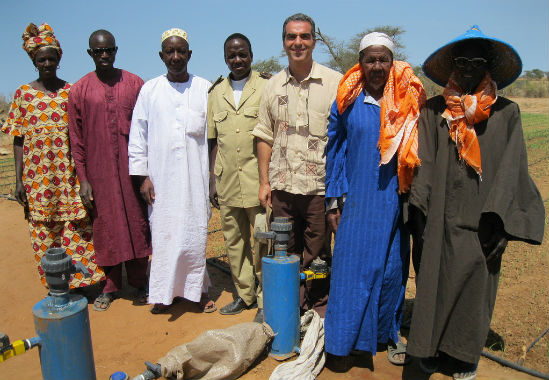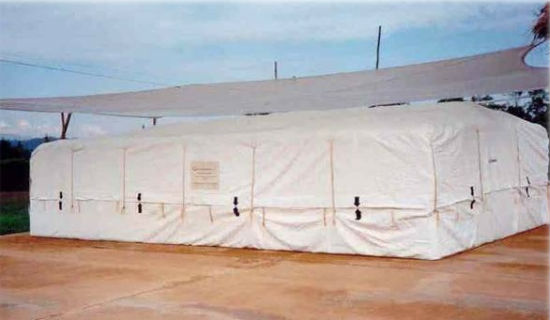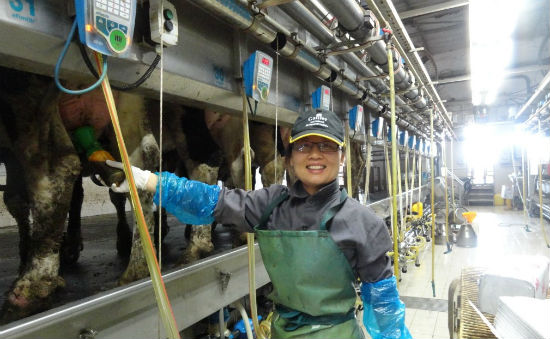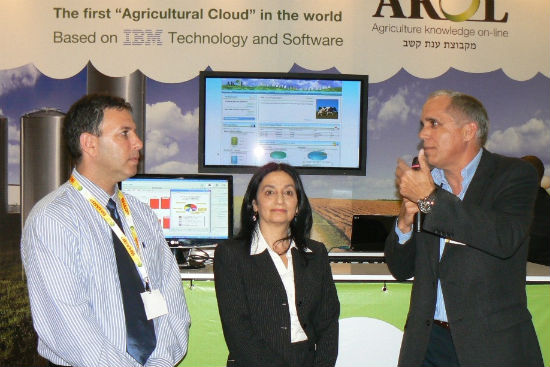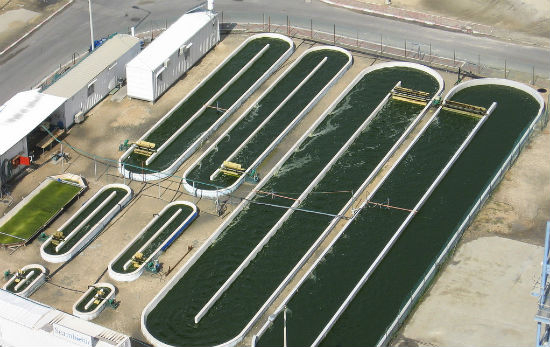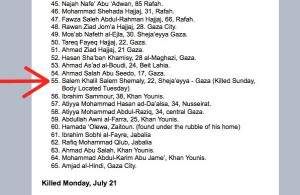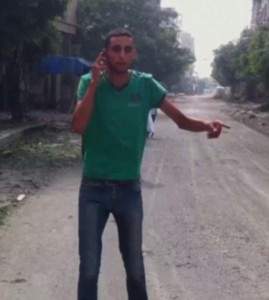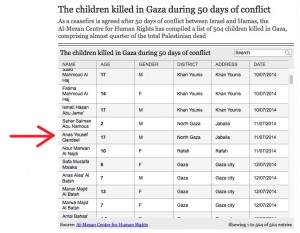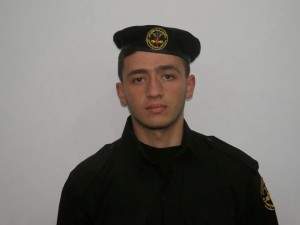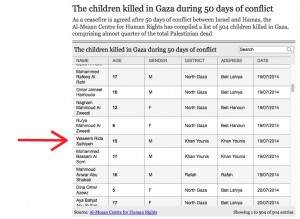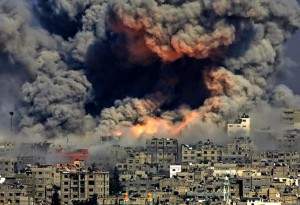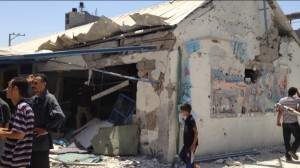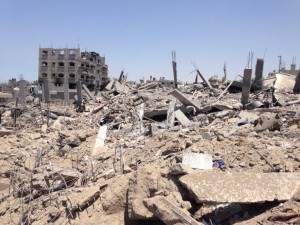New Year's Eve and a fast day? Tonight starts Tenth of Tevet (Hebrew: עשרה בטבת, Asarah BeTevet), the tenth day of the Hebrew month of Tevet, is a fast day in Judaism. It is one of the minor fasts observed from before dawn to nightfall. The fast commemorates the siege of Jerusalem by Nebuchadnezzar II of Babylonia—an event that began on that date and ultimately culminated in the destruction of Solomon's Temple (the First Temple) and the conquest of the Kingdom of Judah (today southern Israel).
Why commemorate the beginning of the siege? it is a reminder to look at the root causes and beginnings of disaster. The result 9th of Av in 586 BCE, 18 months later, was the destruction of the Temple. We face many grave challenges today : jihadism on the upswing, a US President desperate to make a deal with the devil (Iran), many Jews so naive as to think deals can be made with the devil of Abbas and Hamas, and much more. In our revelry tonight for the New Year, let us also somberly reflect on REAL history. The ancient Iraqi's besieged Jerusalem and destroyed the temple. Isis is now on Israel's north and south borders, Iranian soldiers were photographed on the Lebanese border this week, barbarian terrorist Abbas, director of daily war crimes, has the chutzpah to try and join International criminal court to falsely accuse Israel of war crimes, and on and on. The messiah is not yet here. Stand up against evil and for the good.
Wednesday, December 31, 2014
12 ways Israel feeds the world
From drip irrigation to natural pesticides, Israeli innovations are helping to fill hungry bellies everywhere, but particularly in the developing world.
Food security is a major concern for our rapidly growing planet. As resources dwindle and the population rises, smart solutions for better agriculture and safer food storage are essential.
No other single country – certainly not one as young and as tiny as Israel – has contributed more breakthroughs in this area than Israel.
Since the 1950s, Israelis have not only been finding miraculous ways to green their own desert but have shared their discoveries far and wide through channels including MASHAV, Israel’s Agency for International Development Cooperation at the Ministry of Foreign Affairs.
ISRAEL21c has highlighted dozens of food-related advances pioneered by Israelis. Here are 12 major ways Israel helps feed the world.
1. Drip irrigation
Probably no other advancement has been quite as significant. While the concept of drip irrigation existed well before Israeli statehood, it was revolutionized by Israeli water engineer Simcha Blass, who serendipitously discovered that a slow and balanced drip led to remarkable growth. He created tubing that slowly released water where it was most effective, and in 1965 Kibbutz Hatzerim built a whole new industry, Netafim, based on his invention.
Israeli drip and micro-irrigation solutions rapidly spread worldwide. The newest models are self-cleaning and maintain uniform flow rate regardless of water quality and pressure.
Just one recent example of how this method has impacted food supply in foreign countries isTipa, literally “Drop,” an Israeli-developed kit that has allowed 700 farming families in Senegal to reap crops three times a year instead of just once, even on infertile land.
Tipa is “a simple drip irrigation system that uses gravity when there is no water supply or water pressure coming to rural areas,” MASHAV’s Ilan Fluss told ISRAEL21c. The organization has similar activities in Kenya, South Africa, Benin and Niger.
2. Grain cocoons
Israeli-designed GrainPro Cocoons provide a surprisingly simple and cheap way for African and Asian farmers to keep their grain market-fresh.
The huge bags, invented by international food technology consultant Prof. Shlomo Navarro, keep both water and air out. They’re used all over the developed world, including Africa and the Far East, and even in countries that have no diplomatic ties to Israel, such as Pakistan.
As much as 50 percent of every grain harvest and 100% of every pulse harvest is lost to pests and mold, Navarro told ISRAEL21c. Subsistence farmers in developing countries tend to store their crops in primitive baskets or bags, which are not effective in keeping hungry bugs and micro-contaminants out. The Cocoon solves that problem, even in extreme heat and humidity.
3. Biological pest control
On Kibbutz Sde Eliyahu, a company called Bio-Bee breeds beneficial insects and mites for biological pest control and bumblebees for natural pollination in greenhouses and open fields. Subsidiary Bio-Fly sells sterile Mediterranean fruit flies to control this major pest in fruit trees.
R&D manager Dr. Shimon Steinberg told ISRAEL21c the company’s top seller worldwide is two-millimeter-long, pear-shaped orange spider that is a highly efficient enemy of the spider mite, a devastating agricultural pest.
“Sixty percent of California strawberries since 1990 are treated with this predatory mite from the Holy Land,” he reported. In Israel, Bio-Bee products have enabled sweet-pepper farmers to reduce the use of chemical pesticides by 75 percent.
Bio-Bee exports eight different species of biological control agents, plus pollinating bumblebees, to 32 nations from Japan to Chile. Bio-Fly collaborates with Jordanian and West Bank Palestinian Authority agricultural experts.
4. Dairy farming
Hof Hasharon Dairy Farm, SAE Afikim and SCR Precise Dairy Farming all makeadvanced systems for herd management, monitoring and feeding used on dairy farms worldwide.
SAE Afikim is one of 10 Israeli companies involved in a five-year project in Vietnam to implement every aspect of a vast $500 million dairy farm project. It’s the largest project of its kind in the world.
The operation will encompass 30,000 cows at 12 state-of-the-art mega-dairies and a milk processing plant supplying 300 million liters per year. By the end of 2012, 500,000 liters are expected to be produced daily.
In the meantime, China is sending groups of dairy farm manager trainees to Israel to learn how to boost milk production there as well.
5. Tailor-made farm solutions
Kibbutz-based Agricultural Knowledge On-Line (AKOL) makes unique software to help producers grow fruits and vegetables, raise poultry and dairy cows, manage vineyards and make olive oil.
Hosted in IBM’s “cloud,” AKOL’s latest project gives farmers anywhere in the world access to information from Israeli experts. Hundreds of thousands of farmers can obtain tailor-made solutions, arrange group purchases of supplies and communicate with colleagues.
CEO Ron Shani told ISRAEL21c that AKOL applications advise farmers on when to plant, irrigate and harvest; how to cope with drought; how to choose the crops best for their area; how to implement ideal storage and temperature control procedures based on climate; and how to track the growth of chickens, livestock and fruit, among other ideas for running a modern, professional farm.
6. A better potato
It took nearly 30 years of research, but Hebrew University’s Prof. David Levy developedstrains of potatoes that thrive in hot, dry climates, and can be irrigated by saltwater.
Potatoes are one of the top sources of nutrition in the world, but they never before grew well in hot, desert regions like the Middle East. Now farmers in these regions can grow potatoes as a cash crop.
Levy told ISRAEL21c that he also intended his research to enhance understanding between Israel and its neighbors, as scientists and officials from Jordan, Egypt, Lebanon and Morocco meet with Israeli scientists to share knowledge and build bridges of information and technology.
7. Squeezing every drop of water from the air
Tal-Ya Water Technologies developed reusable plastic trays to collect dew from the air, reducing the water needed by crops or trees by up to 50 percent.
The square serrated trays, made from non-PET recycled and recyclable plastic with UV filters and a limestone additive, surround each plant or tree. With overnight temperature change, dew forms on both surfaces of the Tal-Ya tray, which funnels the dew and condensation straight to the roots. If it rains, the trays heighten the effect of each millimeter of water 27 times over.
Inventor and CEO Avraham Tamir told ISRAEL21c that the trays also block the sun so weeds can’t take root, and protect the plants from extreme temperature shifts. “Farmers need to use much less water, and in turn much less fertilizer on the crop,” which translates to less groundwater contamination.
8. Unparalleled crop protection
Two years ago, Hebrew University’s tech-transfer company teamed with Makhteshim Agan, aworld leader in crop protection products, to develop and commercialize slow-release herbicides and a targeted insecticide that doesn’t harm beneficial insects.
The total worldwide herbicide market is valued at more than $15 billion, of which approximately a quarter is dedicated to soil-applied herbicides and other pesticides. The Israeli approach incorporates herbicides into micelles or vesicles, which are absorbed onto negatively charged clay minerals to enable a slow and controlled release, reducing leaching to deeper soil layers. This enhances efficiency and reduces the required doses.
The novel insecticide kills caterpillars of night-flying moths – a common scourge for farmers worldwide – but unlike common commercial preparations, has minimal or no effect on any other creature. High levels of control can be achieved with much less product, greatly minimizing environmental impact.
9. Fishing in the desert
Overfishing is a serious threat to the food supply, a grave situation since fish is the main source of protein for hundreds of millions of people. But what if fish could be raised virtually anywhere, even in the desert? That is just what the Israel’s GFA (Grow Fish Anywhere) Advanced Systems has made possible.
The Israeli “zero-discharge” system eliminates the environmental problems in conventional fish farming, and doesn’t depend on electricity or proximity to a body of water. Specially developed microbes purify fish waste byproducts right in the tank, with no need for spillage and refilling.
The largest facility using GFA technology, in New York, produced about 100 tons of sea bream, bass and tilapia in 2010.
10. Food from greenhouse gas
Israel’s Seambiotic clean-tech company recently launched a commercial algae farm in China and does business in the United States and Italy as well.
People don’t eat algae, but algae ponds nourished by power-plant effluent conserve farmed produce for human consumption because they generate 30 times more feedstock for biofuel than do land-based crop alternatives.
Plus, the tiny plants, which thrive on carbon dioxide and sunlight, produce a valuable nutraceutical food additive that is especially popular in the Far East.
11. Reintroducing carp to Africa
Half a century ago, Lake Victoria carp was a significant part of the diet of the nearby Ugandan villagers. But when Nile perch was introduced to the lake, it decimated most of the smaller fish including the carp. Villagers had neither the equipment nor the expertise necessary to start fishing the huge perch, and symptoms of protein deficiency started becoming apparent in their children.
Prof. Berta Sivan of Hebrew University came to the rescue with a multiyear project near to help these African families. Her team was able to apply techniques developed over many years for Israeli fish farmers.
The Israeli project not only successfully spawned carp on Ugandan fish farms, but also provided training on how to dig and fill ponds and raise the small fish. Now local children have an abundant supply of protein to eat with their fruit and vegetables.
12. Hardier seeds for better crops
Hebrew University agricultural scientists Ilan Sela and Haim D. Rabinowitch developed TraitUP, a trademarked technology that enables the introduction of genetic materials into seeds without modifying their DNA. This method immediately and efficiently improves plants before they’re even sowed.
The university’s Yissum Research Development technology transfer company licensed the seed treatment technology to Morflora Israel for curing fruit-tree diseases in orchards and groves, and for seedling treatment in the nursery.
“The new ability to deliver traits within days instead of years, and to offer a treatment with results similar to breeding to all current species, answers a long and unmet need that will revolutionize modern agriculture and significantly impact the vegetable and commodity crop markets,” said Dotan Peleg, CEO of Morflora.
Saturday, December 27, 2014
12 Questions That Prove Palestine Never Existed!
12 Questions That Prove Palestine Never Existed!
If you are so sure that “Palestine , the country, goes back through most of recorded history,” I expect you to be able to answer a few basic questions about that country of Palestine :
1) When was it founded and by whom?
2) What were its borders?
3) What was its capital?
4) What were its major cities?
5) What constituted the basis of its economy?
6) What was its form of government?
7) Can you name at least one Palestinian leader before Arafat?
8) Was Palestine ever recognized by a country whose existence, at that time or now, leaves no room for interpretation?
9) What was the language of the country of Palestine ?
10) What was the prevalent religion of the country of Palestine ?
11) What was the name of its currency? Choose any date in history and tell what was the approximate exchange rate of the Palestinian monetary unit against the US dollar, German mark, GB pound, Japanese yen, or Chinese yuan on that date.
2) What were its borders?
3) What was its capital?
4) What were its major cities?
5) What constituted the basis of its economy?
6) What was its form of government?
7) Can you name at least one Palestinian leader before Arafat?
8) Was Palestine ever recognized by a country whose existence, at that time or now, leaves no room for interpretation?
9) What was the language of the country of Palestine ?
10) What was the prevalent religion of the country of Palestine ?
11) What was the name of its currency? Choose any date in history and tell what was the approximate exchange rate of the Palestinian monetary unit against the US dollar, German mark, GB pound, Japanese yen, or Chinese yuan on that date.
And, finally, since there is no such country today, what caused its demise and when did it occur?
You are lamenting the “low sinking” of a “once proud” nation. Please tell me, when exactly was that “nation” proud and what was it so proud of?
You are lamenting the “low sinking” of a “once proud” nation. Please tell me, when exactly was that “nation” proud and what was it so proud of?
And here is the least sarcastic question of all: If the people you mistakenly call “Palestinians” are anything but generic Arabs collected from all over — or thrown out of — the Arab world, if they really have a genuine ethnic identity that gives them right for self-determination, why did they never try to become independent until Arabs suffered their devastating defeat in the Six Day War?
I hope you avoid the temptation to trace the modern day “Palestinians” to the Biblical Philistines: substituting etymology for history won’t work here.
The truth should be obvious to everyone who wants to know it. Arab countries have never abandoned the dream of destroying Israel ; they still cherish it today. Having time and again failed to achieve their evil goal with military means, they decided to fight Israel by proxy. For that purpose, they created a terrorist organization, cynically called it “the Palestinian people” and installed it in Gaza , Judea, and Samaria . How else can you explain the refusal by Jordan and Egypt to unconditionally accept back the “West Bank” and Gaza , respectively?
The fact is, Arabs populating Gaza, Judea, and Samaria have much less claim to nationhood than that Indian tribe that successfully emerged in Connecticut with the purpose of starting a tax-exempt casino: at least that tribe had a constructive goal that motivated them. The so-called “Palestinians” have only one motivation: the destruction of Israel , and in my book that is not sufficient to consider them a nation” — or anything else except what they really are: a terrorist organization that will one day be dismantled.
In fact, there is only one way to achieve peace in the Middle East . Arab countries must acknowledge and accept their defeat in their war against Israel and, as the losing side should, pay Israel reparations for the more than 50 years of devastation they have visited on it. The most appropriate form of such reparations would be the removal of their terrorist organization from the land of Israel and accepting Israel ‘s ancient sovereignty over Gaza , Judea, and Samaria.
That will mark the end of the Palestinian people. What are you saying again was its beginning?
Friday, December 26, 2014
The IDF killed no civilians in Gaza
The IDF killed no civilians in Gaza
October 12, 2014 by Thomas Wictor
Today I learned a fact that both exhilarated and depressed me. The exhilaration is the result of my faith in the Israeli Defense Forces being indisputably and permanently justified. However, I’m depressed because once again, prominent Israelis show me that they aren’t willing to debunk the lies that demonize and demoralize the fighting men and women of the IDF. The rationale is that we must “be careful.” Well, I’m not going to “be careful.” The Israeli Defense Forces killed no civilians in Gaza.
What I mean is that the IDF did not knowingly undertake actions that resulted in civilian deaths. Civilians were killed because Hamas and other terrorist groups took extraordinary steps to ensure that such deaths occurred. Yet even in the face of such depravity, the IDF killed a statistically nonexistent number of civilians. I’ll prove it to you, and then you’ll be forced to agree with me.
First, we must show the fraudulence of the lists that claim 2100 Palestinians were killed.
The International Middle East Media Center published the names of all the Palestinians killed in the fifty-day war. Here’s the photo they include.
That’s a lie. She’s reacting to the news of Operation Four Little Martyrs, in which Hamas murdered four children and blamed it on Israel. All the photo captions say she’s the mother of one of the dead boys, photographed outside the morgue of al-Shifa hospital after seeing the corpse of her son.
No name and no tears.
I don’t care if you think I’m being harsh. This woman is pretending. She’s acting for the camera. When I see falseness, I call it out.
The list of dead Palestinians presented by the International Middle East Media Center includes people who were not killed.
Salem Shemaly is the star of the bogus sniper video that the International Solidarity Movement produced.
His family told two completely different stories about when they recovered his body and what condition it was in. Max Blumenthal diligently debunked the Shemaly family’s lies, for which he deserves an attaboy.
Attaboy, Max!
So that list of dead Palestinians is worthless. What about the list of dead Palestinian children that the Telegraph published? Well, it includes terrorists.
Here’s another terrorist.
Though only fifteen, Waseem Rida Salhiyeh was a member of the Abu Rish Brigade.
Therefore another worthless list.
The Palestinians count names twice, and they also include the names of those they accidentally killed themselves and those they murdered. During the fifty-day war, Hamas set off an unbelievable number of massive improvised explosive devices (IEDs).
They leveled entire city blocks.
In addition, 875 rockets fell inside Gaza. All those rockets and IEDs exploded in populated areas. Most of Gaza’s citizens are squeezed into 57 square miles (155 km squared). That’s the size of Gardendale, Alabama.
Gardendale has a population of 13,735, compared to Gaza’s 1.8 million. The population density of Gardendale is 767 per square mile (295 per km squared.) Gaza has a population density of 13,069 per square mile (5046 per km squared). The terrorist IEDs and rockets killed hundreds of Palestinians.
Hamas also murdered hundreds. There were summary executions.
The police killed dozens of protestors, and dozens of accused collaborators were murdered. More names for the death list.
1. Rounding up about 400 members of the opposing political parties, “probably” killing them, and blaming Israel.
2. Locking civilians inside their houses after Israelis warned them to leave, thus ensuring that the residents would be killed.
3. Blocking exits from neighborhoods that the IDF warned would be targeted.
4. Shooting and killing civilians trying to flee from the fighting.
5. Breaking into occupied homes to fire at Israeli troops, in an effort to get civilians killed.
6. Summarily shooting and killing anyone found outside after the order was given to not evacuate.
Now comes the information I learned today that both exhilarated and depressed me.
During the fifty-day war, about 760 Gazans died of natural causes. This is an estimate based on data from the CIA. Since the leading cause of death in Gaza is heart disease, it’s guaranteed that more than 760 Palestinians died of natural causes during Operation Protective Edge. The stress and shock would’ve caused many heart attacks.
However, the Meir Amit Intelligence and Terrorism Information Center—which is trying to determine the rate of Palestinian civilian deaths versus combatant deaths—says that it will not “brand figures released by the Palestinians as deliberate deception.” The Center would “rather err to the detriment of Israel” than make claims it can’t back up.
Would you say that the New York Times is especially pro-Israel? Here’s what it says about whether or not the Palestinians include deaths from natural causes in their lists of those killed by Israel.
“Most likely”? OF COURSE Hamas counts those who died of natural causes in the list of people “killed by Israel.” They lock civilians in their houses to be blown up, they murder children, they kill their own leaders and blame it on Israel, but you think they’re going to draw the line at adding death by natural causes to the list of war dead?
“Khaled, I don’t like this! We can’t blame Israel for these deaths! It’s dishonest!”
The official and utterly unverifiable number of Palestinians killed in Operation Protective Edge is 2100.
If we break down the numbers the way “human rights” organizations admit we should, here’s what we have.
900 combatants killed by the IDF +
760 dead from natural causes +
120 Fatah members killed by Hamas +
400 opposition members killed +
50 protestors killed +
38 “collaborators” killed =
———————————-
2260
760 dead from natural causes +
120 Fatah members killed by Hamas +
400 opposition members killed +
50 protestors killed +
38 “collaborators” killed =
———————————-
2260
That figure does not include those killed by the 1000 IEDs and the 875 rockets. Itdoes not include those forced to stay in their houses during the fighting. It does not include those killed when their homes were used as combat posts. It does not include the total number of those summarily killed for violating whatever rule Hamas deemed violated. It does not include those killed as the collateral damage of terrorist offensive and defensive ground operations. And it does not includethose killed in “false-flag” operations, such as Operation Four Little Martyrs or the Hamas assault on the UNRWA school at Jabalia.
The IDF assault on Shijaiyah—the center of gravity of Hamas and Islamic Jihad—took place a little after midnight on July 20, 2014. Because the civilians didn’t flee, the Israelis chose to forgo artillery preparation. Having been warned of the assault four days in advance, the terrorists readied one of the largest ambushes in the history of urban warfare. At 1:00 a.m. they hit the Golani Brigade with mortars, heavy machine guns, IEDs, recoilless rifles, antitank guided missiles, rocket-propelled grenades, rifle grenades, hand grenades, explosively formed penetrators, and land mines.
In a desperate effort to save the lives of their men, the IDF fired 600 155mm high-explosive artillery shells and dropped 100 MK-84 2000-lb bombs. The fortress of Shijaiyah was demolished.
Seventy Palestinians were reported killed. Out of 100,000.
But wait!
In the Gatestone Institute article about Hamas war crimes, linked above, here’s what a Palestinian said.
In the Shijaiya area, people received warnings from the Israelis and tried to evacuate the area, but Hamas militants blocked the exits and ordered people to return to their homes. Some of the people had no choice but to run towards the Israelis and ask for protection for their families. Hamas shot some of those people as they were running; the rest were forced to return to their homes and get bombed. This is how the Shijaiya massacre happened. More than 100 people were killed.
According to the Palestinians, Hamas caused all the deaths even in the assault on Shijaiyah. Therefore, the death tally is increased.
900 combatants killed by the IDF +
760 dead from natural causes +
120 Fatah members killed by Hamas +
400 opposition members killed +
50 protestors killed +
38 “collaborators” killed +
100 civilians killed in Shijaiyah =
———————————-
2360
760 dead from natural causes +
120 Fatah members killed by Hamas +
400 opposition members killed +
50 protestors killed +
38 “collaborators” killed +
100 civilians killed in Shijaiyah =
———————————-
2360
Remember that the official toll is 2100. This proves two things, the first being that Palestinian figures are completely worthless.
Secondly, it proves that the Israeli Defense Forces achieved the impossible: They fought a major war without killing civilians. Virtually all of the civilians who died were killed by Palestinian terrorists or were the victims of illness, accident, or domestic violence.
You may not think that Israelis are God’s chosen people, but the Israeli Defense Forces deserve to be God’s chosen military.
Subscribe to:
Posts (Atom)

